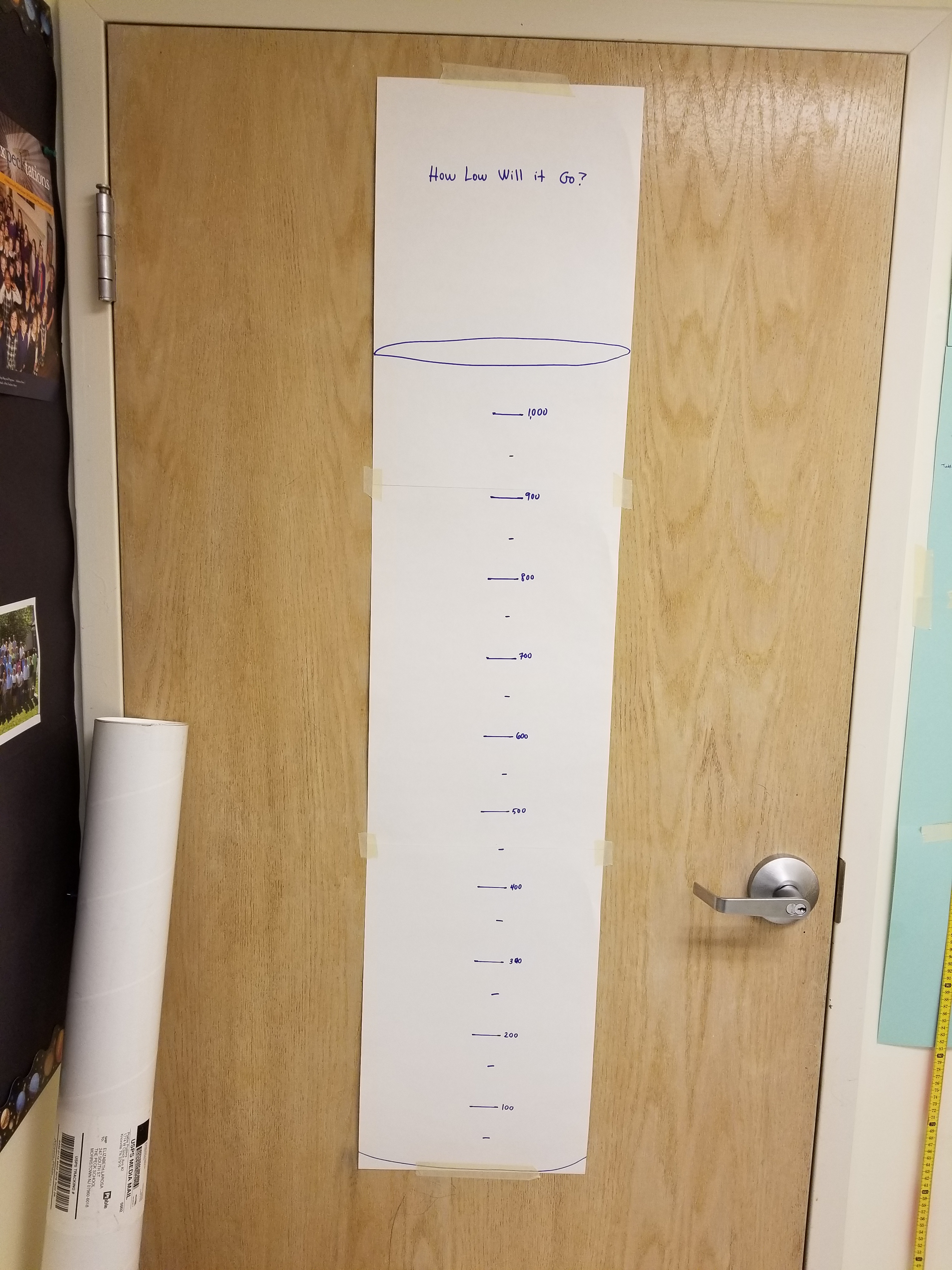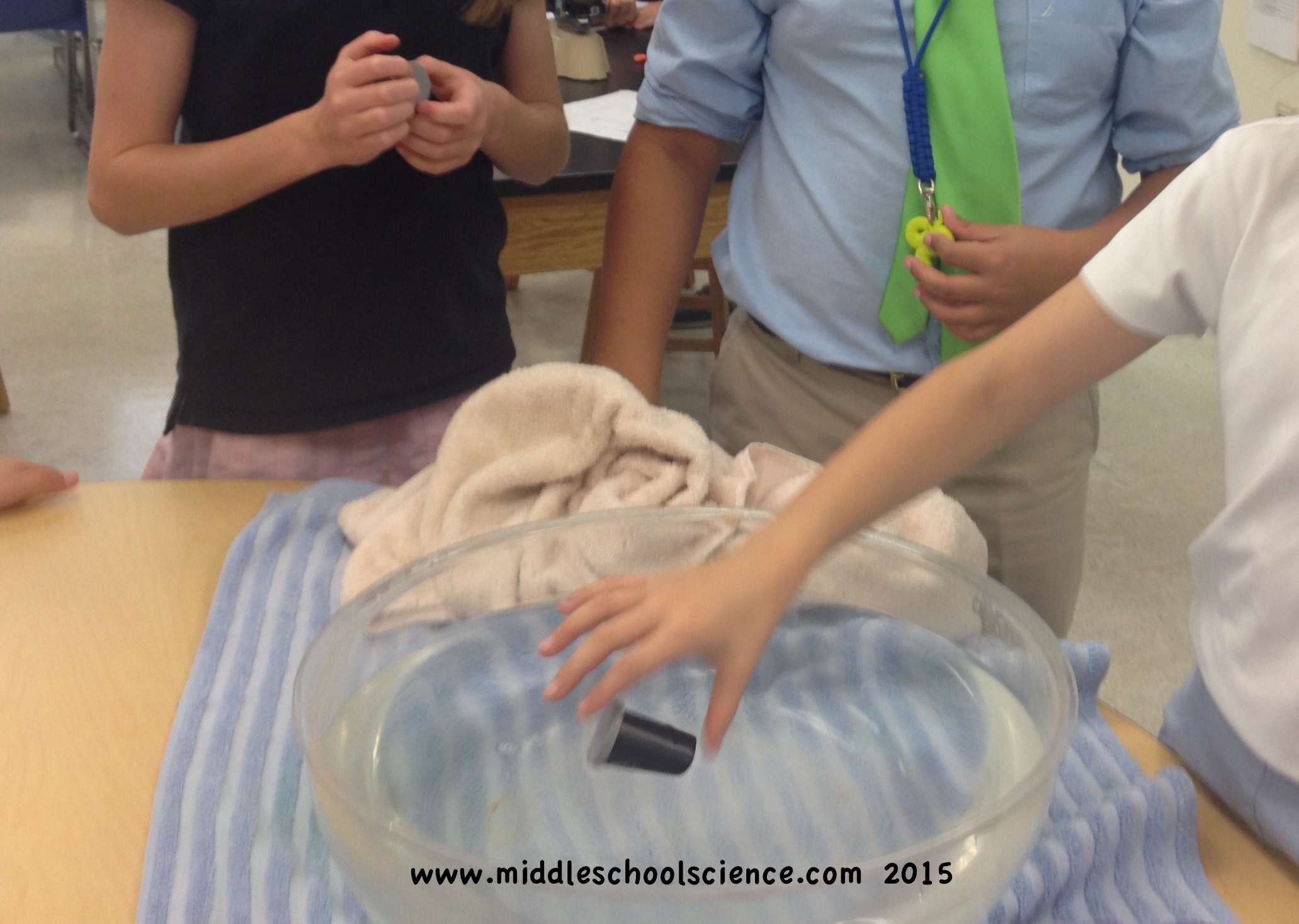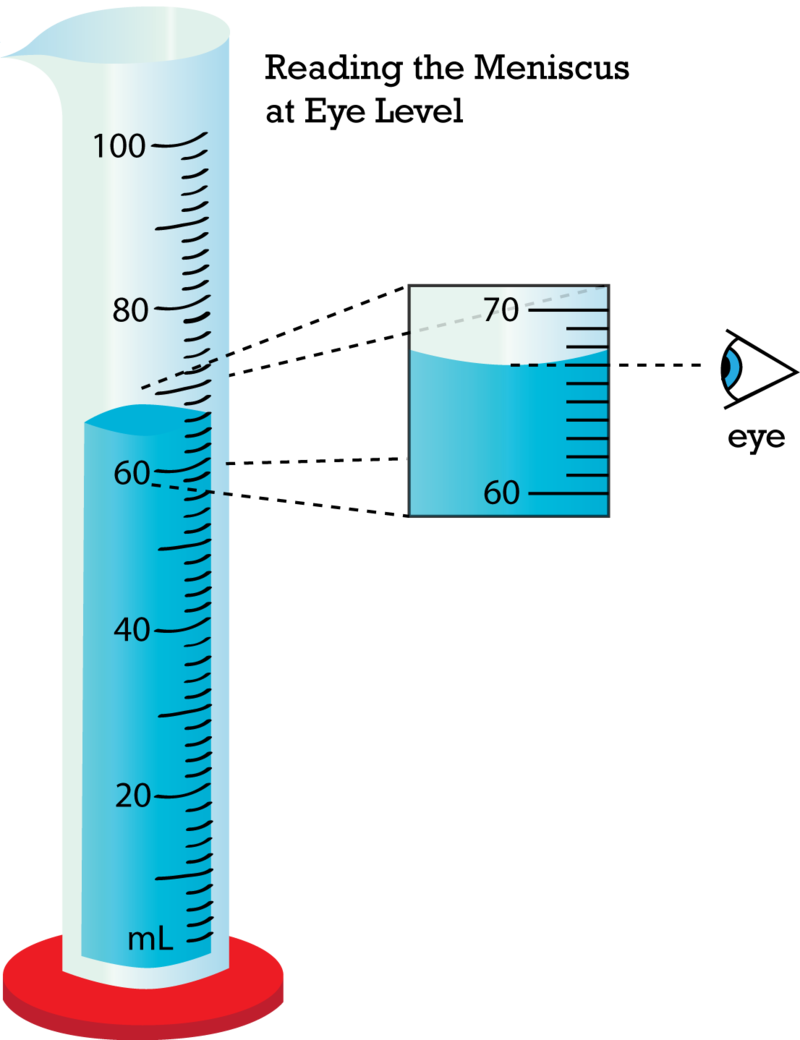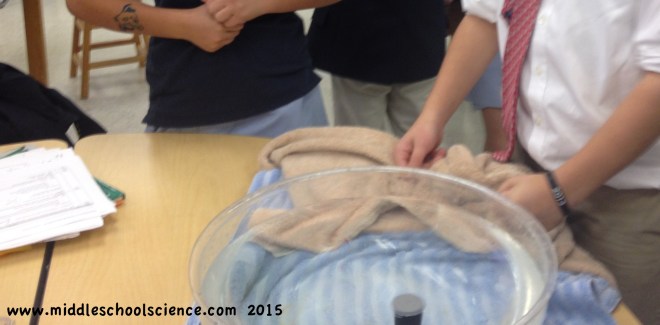
Materials:
- Heat lamp
- Stand
- Clamp
- Infrared Thermometer
- 6 beakers each of sand, water, gravel (other items can be used, or more than 3 can be added)
- Meter Stick
- Handout with instructions, data collection, and questions (Google Doc)
- Google Sheet for graphing (Google Drive)
- Newsela Reading – Heat Islands & Questions (Google Doc)
Directions:
Day 1:
Explore the campus on a sunny day and select both natural and manmade surfaces and record data. Enter data into spreadsheet – what patterns do you notice?
HW: Read newsela article and answer questions, discuss next class, how does this relate to our findings today?
Day 2:
Set up heat lamp experiment for a minimum of 25 minutes, make predictions, which surface will heat up the most? How hot will it get? What location (1-6)? Enter data and discuss results.
HW: Lab write up and discuss results next class
This was the first time I did this experiment, and seeing the results definitely had the ‘wow’ factor with my 6th graders, seeing the temps was actually surprising, esp for the rocks under the heat lamp. Many students thought the sand would be the hottest from their experience walking on hot sand at the beach in July/Aug. Also, the surface temp of the playground was surprising since it was a rubbery light colored composite and not dark colored asphalt. Prior to this activity, we took notes and discussed heat – radiation, convection, and conduction, and notes on sunlight and how it causes the seasons and different climates on Earth. Under the heat lamp, position 1 was analogous to being at the equator while position 6 was at the poles. The Google Sheets will automatically graph your results once the data is entered.
If you use this activity, would love to see your results!
















